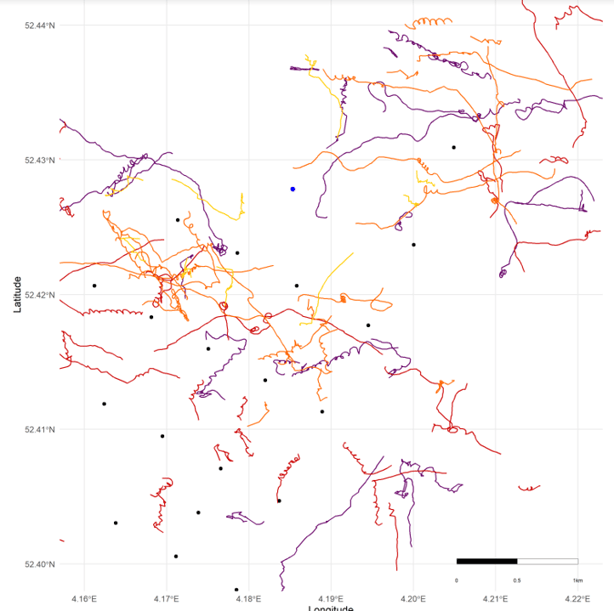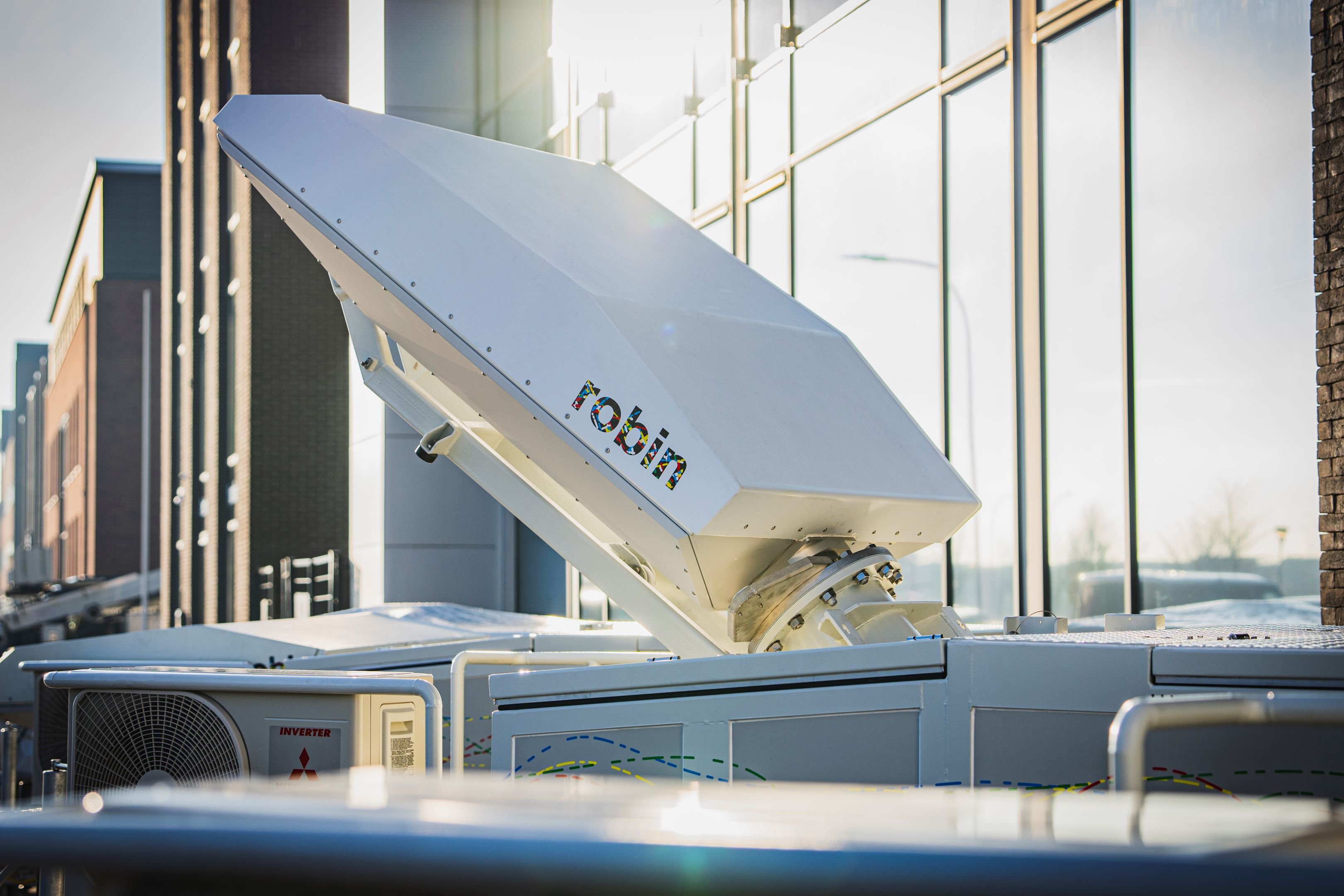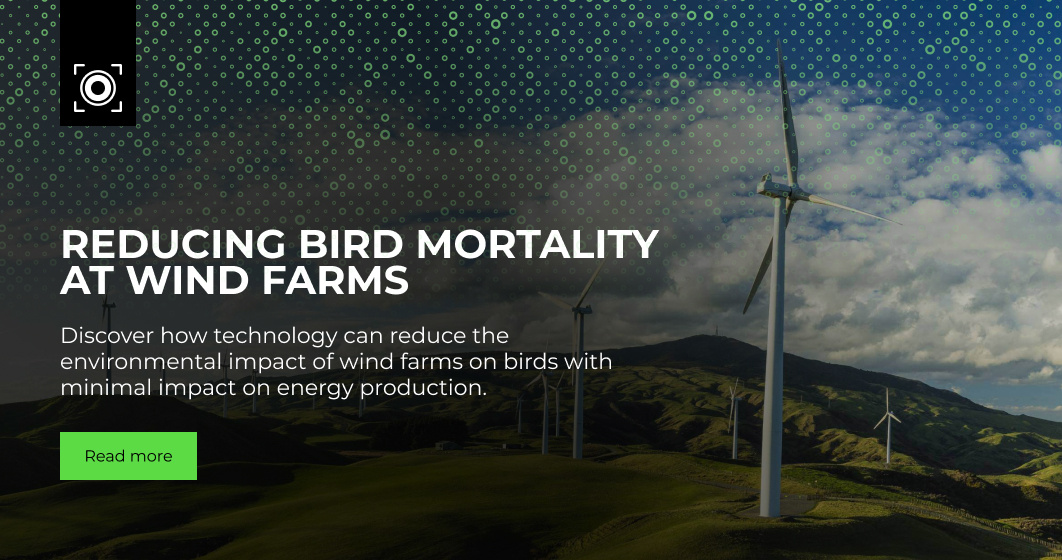Wind energy is part of an essential worldwide solution. There’s no wonder that wind farms have become a common sight.
In Europe alone, turbines dot our shorelines and flank our highways. For many, their slow, constant turn has simply slipped into the hum of daily life. But there's a careful balance at play. Although these giants of renewable energy work to conserve in one sense, their unyielding turn puts elements of the natural world in danger.
Their development could threaten important ecological sites, disrupt essential bird migrations and put endangered and native species at risk. That’s why, for every planned and operating wind farm, there’s a collection of ecological specialists working (together) to ensure harmony between wind turbines and the wildlife around them.
Here, at the cross-section between technical innovation and scientific research, is where Rijkswaterstaat and the University of Amsterdam (UvA) enter our story.
Partnerships forged in radar
Rijkswaterstaat is a key driver for the development of governmental projects shaping a more sustainable future in the Netherlands. It's their ambition to create an entirely climate-neutral and circular economy by 2050, and their vital work spotlights the impact of human infrastructure on delicate ecological sites.
A longstanding partner of Robin, Rijkswaterstaat uses seven Robin avian radars to monitor bird movements at multiple offshore sites. Rijkswaterstaat shares its radar data and research with partners and pioneers in Dutch ecology, including UvA.
The data reaches a talented team of researchers at UvA, led by Prof.dr. Judy Shamoun-Baranes and based at the Institute for Biodiversity and Ecosystem Dynamics (IBED), Faculty of Science.
Radar data is an important part of their research on bird movement, helping to develop measures and protocols that reduce bird fatalities and protect migrations.
Informing the protocol that preserves life
Researchers at UvA are learning all the time, and so are we. UvA researcher, Maja Bradarić said: “The research we are doing can have far-reaching effects in fields of bird behaviour, conservation, ecological management and radar technology.
“Being one of the few groups using radars to track bird movements, we always strive to work with developers of various radar technologies to help improve them for ecological research. With our research, we also hope to encourage other scientists to delve into the charms of radar. Creating a wider radar network across Europe and beyond could lead to endless possibilities in answering some major ecological questions.
“Our research focuses on the Dutch North Sea, but findings could inspire similar studies across the world, encouraging the development of similar conservation protocols.”
Researcher Jens van Erp added: “All of our projects bring us closer to understanding the natural world and developing ways to protect it. We’re especially grateful for funding from organisations such as Rijkswaterstaat and The Dutch Research Council (NWO), who make it possible for us to forge ahead.”
Trailblazers in migratory turbine shut down
On May 13th, 2023, the whirl of an offshore wind farm near Borssele and Egmond aan Zee slowed to silence. The turbines had stopped, for the first time, to allow the safe passage of a massive predicted migration. The predictive model, developed by UvA and born from an innovative collaboration between Rijkswaterstaat and Robin, paves the way for better protection of biodiversity at offshore wind farms.
Climate Minister Rob Jetten said: “This is an international first; nowhere in the world have offshore wind farms been shut down to protect birds during mass bird migration. We want to keep the impact of wind farms on nature as small as possible and we do this, among other things, with this measure.”
Robin’s bird detection radars can detect and initiate shutdown in real time, but in the Netherlands, operators must commit energy to the grid in advance. That means energy commitments could fall short when turbines slow or halt production.
This is why, with data from weather and bird radars, UvA researcher, Maja Bradarić, produced the prediction model that forecasts migration intensity two days in advance. This kind of warning gives Dutch grid operators time to guarantee the stability of the high-voltage grid and initiate shutdown protocol.
As a result, as of autumn 2023, wind farms are being shut down more frequently to protect migratory birds in the North Sea.
Understanding the thermal soaring of sea birds
Some seabirds use specific flight modes, shaped by millions of years of evolution, to efficiently move through the skies. One of these is ‘thermal soaring’, where birds use warm rising air to gain altitude and save energy.
Birds use energy sparingly, every ounce calculated for flight, feeding and survival. So, when the warm sea creates a column of rising air, sea birds effectively ride it to gain altitude. Clever, no?
The problem with thermal soaring is that UvA expects that with it, birds are likely to spend more time in the rotor-swept zone (RSZ). That puts them at a much greater risk of collision with blades. By investigating two study sites in the North Sea, researchers showed that birds performed thermal soaring within wind farms, and did indeed fly at higher altitudes and therefore with higher risk.
Luckily, thermal soaring seems rare at sea as the circumstances to achieve it must be just right. The behaviour mostly occurred when the sea surface was warmer than the air, with north-and north-westerly winds.
Studying breeding seasons in the Dutch North Sea
As well as flight behaviours, cyclical patterns such as migrations and breeding seasons inform the level of danger wind farms pose for birds
The Dutch government plans to produce 11.5GW of offshore wind energy by the end of 2030. The effect of this development on offshore birdlife is still difficult to predict, but there is a clear expectation: when the number of seabirds is higher around shorelines, so is the threat of collision.
In 2019, the UvA set out to investigate bird abundance in the breeding season over the Dutch North Sea, analysing three highly predictable external variables thought to inform seabird behaviours: daylight availability, the time of year, and the tide.
Results found that bird abundance was significantly tied to sun azimuth (daylight availability), followed by the week of breeding season (time of year). It also found that, despite initial expectations, the astronomical tide had no real effect on bird abundance.
Lifting technical research to new heights

Sibylle Giraud, Robin’s VP Wind and Environmental Practice, said: “I joined Robin in 2018 to expand our scope and create a team that fully focuses on avian protection in the wind and environmental segment. It’s been an extraordinary journey over the last five years, seeing our flagship system, MAX, being gradually deployed all over the world.
“What I love the most is the passion within the industry to keep finding innovative ways to protect birds whilst helping the green transition. The pace of innovation only seems to be accelerating lately, in every corner of the planet. It’s thanks to an active ecosystem of government institutions, environmental consultancies, and other bird protection entities that we are progressing at the speed that we are.
“It’s amazing to see our radar data analysed by bright young researchers like Maja Bradarić and Jens van Erp to develop a model that will be implemented for turbine shutdowns during peak migration periods.
“These types of breakthrough projects are only feasible due to the commitment and close cooperation of different parties, including the wind farm owners, grid operators, and several ministries and government institutions.”


